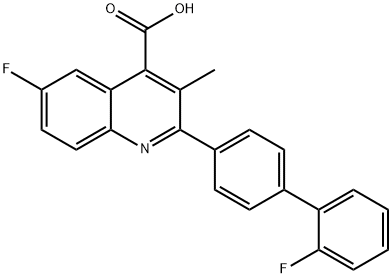SAFETY INFORMATION
| Signal word | Warning |
|---|---|
| Pictogram(s) |
 Exclamation Mark Irritant GHS07 |
| GHS Hazard Statements |
H302:Acute toxicity,oral H315:Skin corrosion/irritation H319:Serious eye damage/eye irritation H335:Specific target organ toxicity, single exposure;Respiratory tract irritation |
| Precautionary Statement Codes |
P261:Avoid breathing dust/fume/gas/mist/vapours/spray. P305+P351+P338:IF IN EYES: Rinse cautiously with water for several minutes. Remove contact lenses, if present and easy to do. Continuerinsing. |
COMPUTED DESCRIPTORS
| Molecular Weight | 375.4 g/mol |
|---|---|
| XLogP3 | 5.6 |
| Hydrogen Bond Donor Count | 1 |
| Hydrogen Bond Acceptor Count | 5 |
| Rotatable Bond Count | 3 |
| Exact Mass | 375.10708505 g/mol |
| Monoisotopic Mass | 375.10708505 g/mol |
| Topological Polar Surface Area | 50.2 Ų |
| Heavy Atom Count | 28 |
| Formal Charge | 0 |
| Complexity | 551 |
| Isotope Atom Count | 0 |
| Defined Atom Stereocenter Count | 0 |
| Undefined Atom Stereocenter Count | 0 |
| Defined Bond Stereocenter Count | 0 |
| Undefined Bond Stereocenter Count | 0 |
| Covalently-Bonded Unit Count | 1 |
| Compound Is Canonicalized | Yes |
PRODUCT INTRODUCTION
description
Brequinar is a quinolinemonocarboxylic acid that is quinoline substituted by 2'-fluoro[1,1'-biphenyl]-4-yl, methyl, carboxy and fluoro groups at positions 2, 3, 4, and 6, respectively. It is an inhibitor of dihydroorotate dehydrogenase, an enzyme that is required for de novo pyrimidine biosynthesis. The compound exhibits antineoplastic and antiviral properties. It has a role as an EC 1.3.5.2 [dihydroorotate dehydrogenase (quinone)] inhibitor, an immunosuppressive agent, an antineoplastic agent, an antiviral agent, a pyrimidine synthesis inhibitor, an anticoronaviral agent and an antimetabolite. It is a member of biphenyls, a member of monofluorobenzenes, a quinolinemonocarboxylic acid and a monocarboxylic acid. It is a conjugate acid of a brequinar(1-).
